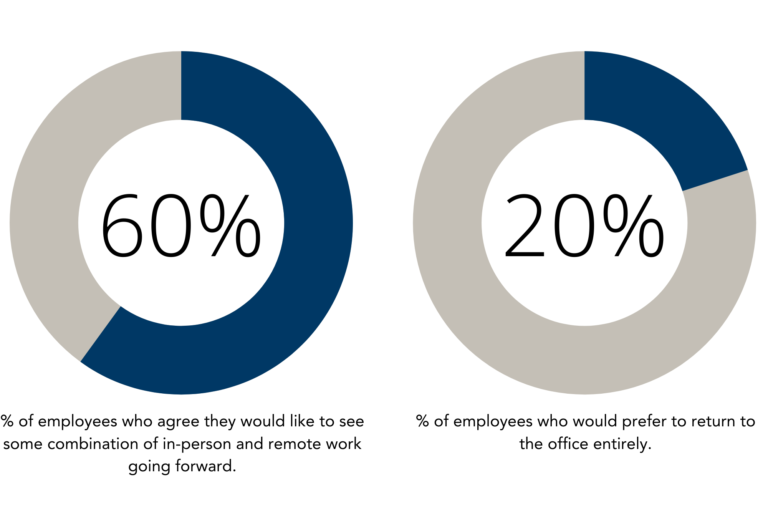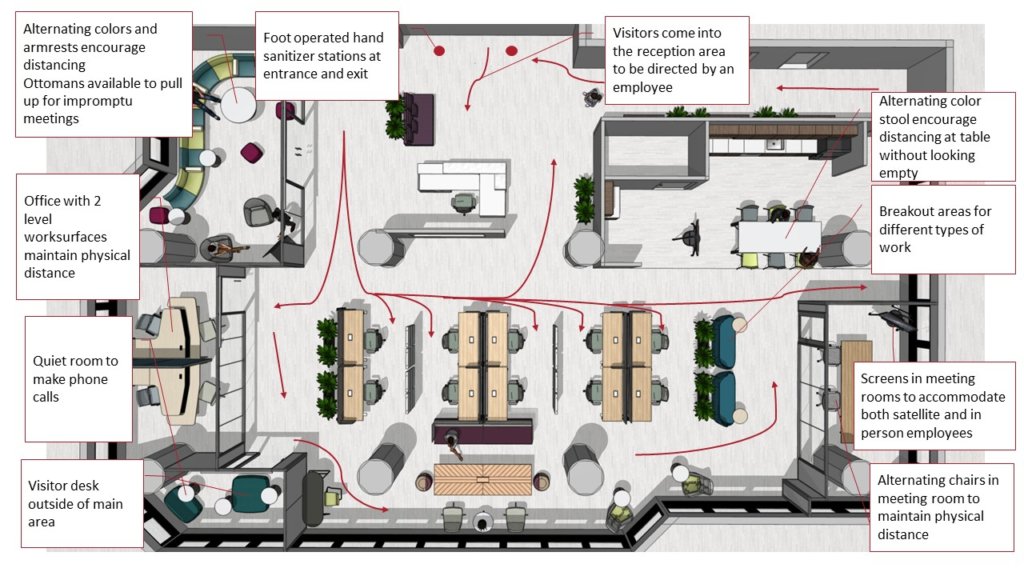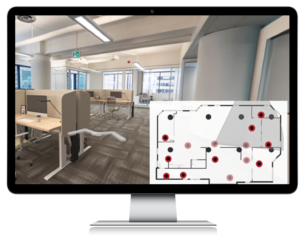Now more than a year into the pandemic, employees report feeling fatigued by the persistent nature of the virtual office. Amid a global crisis, seismic shifts have happened in the workplace, allowing employers to trial a remote working strategy and determine organizational fit. The result? Across industries, studies found that remote working had little effect on employee output, with over 40 percent of Canadians reporting that their productivity is unchanged when working from home.
The Risks of the Digital Workspace
While remote working has proven successful for many organizations since the start of the pandemic, employers acknowledge that the momentum of the virtual workspace may be attributed to built-up social capital. In other words, in person meetings, water cooler conversations and a well-established corporate culture may have supported the transition to virtual during a year of COVID-19 lockdowns, but will this erode with time? The digital workspace may not be as well-equipped to handle the natural ebbs and flows of workforce landscapes over a longer period.
After one year of remote working, professionals report feeling digital fatigue and a yearning for social interaction. Studies show that more than 60 percent of employees agree that they would like to see some combination of in-office and remote work going forward, with 20 percent reporting that they would prefer to return to the office entirely.
While digital fatigue remains a threat to employee productivity, more critical to organizational growth is the high flight risk posed by virtual employees and the challenge for HR managers to identify it. Studies show that remote work, while both efficient and good for the bottom line, may be detrimental to the long-term talent development and innovation capital of an organization.

To remain competitive, organizations must continue to value the office space as a critical tool to foster innovation. The challenge becomes to create spaces that are conducive to socialization and a collaborative corporate culture but do so in a way that employees feel safe and supported.
Psychological Safety in the Post-Pandemic Office
Safety is top of mind for all organizations planning their return-to-work strategy. Robert Hill, co-owner of Ottawa-based corporate furniture distribution company, NUA, suggests that leadership should view an employee’s level of perceived risk, or psychological safety, as paramount. “Employees must feel safe enough in the workspace to be productive,” explains Hill. We’re learning that this sense of safety can be subjective. Employers will need to accommodate for all attitudes towards risk during the return to work.”
In the post pandemic office design at 81 Metcalfe, Suite 200, in Ottawa, many facets of the pandemic office are carried over to facilitate the transition from remote working. Foot powered hand sanitization stations, workspace dividers, and tools to maintain traffic flow are all examples of pandemic response features that have survived the return to work.”

Traffic flow, says Robert Hill, is also a main consideration in the office space of the future. In the post-pandemic design of Suite 200, workplace geometry, or the arrangement and build of furniture in the space, works to optimize the flow of one-way traffic. Maintaining one-way traffic flow in the workplace reduces the number of potential collisions, or collision points, that occur when two employees organically meet. Here, the idea is that workspaces are agile, responsive, and flexible, allowing the workforce to adapt quickly if the need to maintain distance arises. “The return to work presents organizations with an opportunity to better prepare for future circumstances,” explains Hill. “Employers should take this time to put in place the needed infrastructure to better respond to future crises.”
Along with considering safety, employers can leverage design elements and principles to help account for employee mood and enhance the experience of professionals during the return to work. Learn more about creating positive workspaces using mood-boosting elements in our next post in this four-part series.
Visit the listing page for 81 Metcalfe for more information about this property.
The Post-Pandemic Office Part 2: Creating Positive Workspaces Using Mood-Boosting Elements



